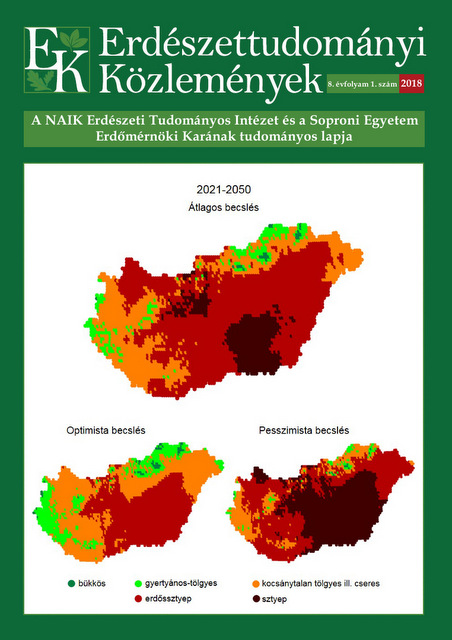Machine learning approximation of Járó-table (table of applicable targeted forest stands and their growth for each forest site)
Kornél Czimber, Csaba Mátyás, András Bidló & Borbála Gálos
Correspondence
Correspondence: Czimber Kornél
Postal address: H-9400 Sopron, Bajcsy-Zsilinszky u. 4.
e-mail: czimber.kornel[at]uni-sopron.hu
Abstract
In this article, we would like to present a machine learning algorithm that processes the data of Járó’s target stands and their growth for each forest site variation. The method is able to propose stand types and growths on the basis of existing data for new variations due to climate change and for a newly entering forest climate zone. The essence of this process is to place the entries of the Járó’s table in a five-dimensional space, and use distance kernels to select the closest target stand types and weight their growth rate. It defines for a specific forest site, which target stands are likely to be in the area and what kind of growth can be characterized. The results will be incorporated into the decision support system of the Agrárklima project after proper validation.
Keywords: machine learning, forest site, targeted stand, growth
Open Acces
For non-commercial purposes, let others distribute and copy the article, and include in a collective work, as long as they cite the author(s) and the journal, and provided they do not alter or modify the article.
Cite this article as:
Czimber, K., Mátyás, Cs., Bidló, A. & Gálos, B. (2018): Machine learning approximation of Járó-table (table of applicable targeted forest stands and their growth for each forest site). Bulletin of Forestry Science, 8(1): 93-103. (in Hungarian) DOI: 10.17164/EK.2018.006
Volume 8, Issue 1
Pages: 93-103
First published:
29 May 2018
Related content
3
More articles
by this authors
16
Related content in the Bulletin of Forestry Science*
More articles by this authors in the Bulletin of Forestry Science
* Automatically generated recommendations based on the occurrence of keywords given by authors in the titles and abstracts of other articles. For more detailed search please use the manual search.
